- Home
- James Rollins
Crucible Page 2
Crucible Read online
Page 2
In short order, the cell was unbarred, and Alonso strode alongside Ibarra out of the jail and into the village square. To steady the priest and keep him upright, Alonso kept a hand on Ibarra’s elbow. It was not just weakness and starvation that trembled the man’s limbs—but the sight found in the square.
Six stakes smoldered, holding fire-contorted shapes, charred arms raised high, wrists bound in glowing iron. A seventh trunk of freshly hewn chestnut towered upright in a waist-high pile of dry kindling.
Ibarra reached and clutched hard to Alonso’s hand.
Alonso tried to squeeze reassurance into the frightened prisoner. “May God accept you into His embrace.”
But Alonso had misinterpreted the priest’s intent. Bony fingers pried open his hand and pressed an object into his palm. Alonso instinctively closed his fingers over it, knowing what had been passed to him in secret, likely slipped free from some secret pocket inside the priest’s tattered robe.
Ibarra’s amulet.
The priest whispered in Spanish, confirming what Alonso suspected. “Nóminas de moro.”
Nóminas were charms or amulets upon which were inscribed the names of saints and were said to be capable of miraculous acts.
“It was found at the source of the Orabidea River,” Ibarra explained urgently. “Keep it from them.”
Ahead, through the pall of smoke, a tall figure strode purposefully forward. His robe was crimson, his blindfold was black. It was the sect’s leader. Alonso had heard rumors of this inner cabal of the Inquisition, those who still adhered to the bloodlust of long-dead Torquemada. They called themselves the Crucibulum, after the Latin word for crucible, a vessel that purifies through fire.
Alonso stared at the smoking remains chained to the six stakes. His fingers tightened harder on the amulet in his palm.
The leader came forward and nodded to his brethren. Upon this silent order, they stripped Ibarra from Alonso’s side and dragged him forward. The leader carried a thick book in his arms, gilded in gold. Alonso easily recognized the accursed tome. The full title—Malleus Maleficarum, Maleficas, & earum hæresim, ut phramea potentissima conterens—translated as “The Hammer of Witches which destroys Witches and their heresy as with a two-edged sword.” The book was composed over a century ago, a bible for hunting down, identifying, and punishing witches. Already the book was falling out of favor by the papacy, even among those in the Inquisition.
But it grew even stronger within the cabal of the Crucibulum.
Alonso stood steadfast. What else could he do? He was a lone junior inquisitor against a dozen of the ancient Crucibulum.
As Ibarra was marched toward his death, the sect’s leader dogged each step. The man whispered fervently in the priest’s ear. Alonso heard mention of the word nóminas.
So Ibarra was correct in his fear.
Alonso imagined the Crucibulum’s leader must be delivering threats or offering promises of salvation, if only Ibarra would reveal the truth about his amulet.
Fearing attention might turn toward him, as he’d been alone with Ibarra, Alonso retreated from the square. His last sight of Ibarra was as the priest was chained to the trunk of chestnut atop the pile of wood. Ibarra caught his eye and gave the smallest nod of his head.
Keep it from them.
Alonso swore to do so as he turned his back. He hurried toward where his horse was stabled. Before he had taken more than a few steps, Ibarra’s raised voice shouted to the heavens.
“BURN US ALL! IT MATTERS NOT. SAINT COLUMBA PROPHESIED HER COMING. THE WITCH WHO WILL CARRY ON HER LEGACY. THE WITCH WHO WILL CRACK THE CRUCIBLE AND PURIFY THE WORLD!”
Alonso stumbled at such a declaration. No wonder the Crucibulum sought to silence the cult of Columba, and more important, burn to ash any proof of such a claim. He tightened his grip on the talisman in his hand. True or not, the world was slowly changing—forsaking Torquemada’s ways, letting copies of the Malleus Maleficarum molder into dust—but before that happened, he foresaw more bloodshed and flames, the final convulsions of a dying age.
Once far enough away, Alonso risked studying Ibarra’s nóminas. He opened his hand. Shocked at what he saw, he almost dropped the treasure. It was a finger, raggedly torn from some hand. The edges looked burned, but otherwise, it was perfectly preserved. He knew one of the signs of sainthood was when the relics of such holy figures proved incorruptible, remaining untouched by decay or rot.
Did he hold such a relic in his hand?
He stopped to study it closer, discovering words inked into the flesh.
Sanctus Maleficarum.
He translated the Latin.
Saint of Witches.
So it was indeed a nóminas, an amulet with the name of a saint written upon it. But his inspection exposed a greater revelation. The finger was not a holy relic—a piece of a saint’s flesh—but something even more incredible.
Breathless with wonder, he turned the object over and over. While the flesh appeared real, it was not. The skin was flexible but cold. The torn end revealed a clockwork mechanism of thin wires and gleaming metal bones. It was a simulacrum, a mechanical homunculus of a finger.
Alonso had heard stories of gifts presented to kings and queens, intricate fabrications that mimicked movements of the body. Sixty years ago, the Holy Roman Emperor Charles V was presented with a clockwork figure of a monk, designed by the Spanish-Italian engineer and artisan Juanelo Turriano. The doll could raise and lower a wooden cross, bringing the crucifix to its lips, which moved in silent prayer, while its head nodded and its eyes moved.
Am I holding a piece of such an artifice?
If so, what was its significance? How did it tie to the cult of Saint Columba?
With no answer, he continued toward the stables. Ibarra had left him one additional clue to this mystery: the source of the talisman, where it had been found.
“The Orabidea River,” he mumbled with a furrowed brow.
Every Inquisitor in the region knew of that river. It flowed from a cave called Sorginen Leizea, the cave of witches. Many a witch’s sabbath was held at that site. The Orabidea River had an equally dark history. It was sometimes called Infernuko erreka, or “Hell’s Stream,” as it was rumored to flow from the bowels of Hell into this world.
He shuddered in dread. If Ibarra had spoken the truth, the amulet in his hand had been discovered at the river’s source.
In other words, at the very gates of hell itself.
He balked about pursuing this matter any further and considered tossing the amulet away—then an agonized scream rose behind him, echoing up to the stars.
Ibarra . . .
He firmed his grip on the nóminas.
The priest had died to keep this secret.
I must not forsake this burden.
Even if it meant crossing through the gates of Hell, he would know the truth.
Present Day
December 21, 10:18 P.M. WET
Coimbra, Portugal
The coven awaited her.
Charlotte Carson hurried across the breadth of the darkened university library. Her rushed footsteps echoed off the marble floor to the bricked roof of the two-story medieval gallery. All around, ornate shelves housed books dating as far back as the twelfth century. With the vast space lit by only a handful of sconces, she gaped at the shadowy climb of ladders, at the elaborate gilded woodwork.
Constructed in the early eighteenth century, the Biblioteca Joanina remained a perfectly preserved gem of Baroque architecture and design, the true historic center of the University of Coimbra. And like any treasure house, it was a veritable vault, with walls two feet thick and massive doors of solid teak that sealed the space. The purposeful design maintained the interior at a steady sixty-five degrees, no matter the season, along with a constant low humidity.
Perfect for preserving the integrity of ancient books . . .
But such conservation efforts were not limited to the library’s architecture.
Charlotte ducked as a b
at whisked past her head and shot into the upper gallery. Unheard but felt, its ultrasonic whistle shivered the small hairs on the back of her neck. For centuries, a colony of bats had made the library its home. They were steadfast allies in the fight to preserve the work stored here. Each night, they consumed insects that might have otherwise feasted on the vast bounty of old leather and yellowed parchment.
Of course, sharing this vault with such devoted hunters required certain precautions. She ran a finger along the leather blankets that covered the tables. The caretakers draped them each evening after they closed the building to shield the wooden surfaces from the bats’ droppings.
Still, as she stared up at the glide of winged shadows against the brick vaults, she felt a stir of superstitious dread—along with a modicum of amusement.
What’s a gathering of witches without bats?
Even this night had been specially chosen. The weeklong scientific symposium had ended today. By tomorrow, the participants would be heading home, spreading to the far corners of the globe to spend the holidays with friends and family. But tonight, countless bonfires would light the city, accompanied by the merriment of various musical festivals, all to celebrate the winter solstice, the longest night of the year.
She checked her watch, knowing she was running late. She still wore the same semiformal outfit from the holiday party at the embassy: a loose black skirt that brushed her ankles and a short coat over a blue blouse. Her hair was styled to her scalp. It had gone prematurely silver and remained short and sparse after the course of chemo nine months ago. Afterward, she didn’t bother with dyes or extensions. Having survived the brutalities and humiliations of cancer, vanity seemed a foolish frivolity. She no longer had the patience for it.
Not that she had much free time anyway.
She frowned at her watch.
Only four minutes to go.
She pictured the sun on the other side of the world as it crested toward the Tropic of Capricorn. When the sun balanced at that latitude, it would mark the moment of the true solstice, when winter inevitably tilted toward summer, when darkness gave way to light.
The perfect time for this demonstration.
A proof of concept.
“Fiat lux,” she whispered.
Let there be light.
Ahead, a brighter glow illuminated an archway that opened to a spiral staircase leading to the library’s lower regions. This topmost level was called the Noble Floor, due to its beauty and history. Directly below, the Intermediate Floor remained the sole domain of librarians, where they stored a bulk of the rarest books for safekeeping.
But Charlotte’s destination lay one story deeper.
Sensing the press of time, she hurried toward the archway.
By now, the others would have gathered below. She crossed under the painting of King John V, the Portuguese king who founded the library, and reached the steps that spiraled all the way down to the bottommost level of the library.
As she circled around and around the tight staircase, a low murmur of voices rose to greet her. Upon reaching the last step, she halted at a stout black iron gate. It had been left ajar for her. Fixed upon it was a sign that read PRISÃO ACADÉMICA.
She smiled at the thought of a prison being built under a library. She pictured recalcitrant students or drunken professors being locked up down here. Once a part of the original dungeons of the royal palace, this floor had continued to serve as the university’s prison until 1834. Today, it remained the only existing example of a medieval prison in all of Portugal.
She slipped through the gate and into the dungeon. A good section of this floor was open to tourists, while other locked rooms were used as additional book storage. She headed toward the far side, where the modern age had infiltrated this medieval space. A new computer system had been installed in an unused back vault, including a system for digitizing books, offering a way to further safeguard the treasures stored above.
On this winter’s solstice, the computers would serve a new purpose—not to preserve the past, but to offer a glimpse into the future.
As she entered the back vault, a woman’s voice greeted her. “Ah, Embaixador Carson, you made it in time.”
Dressed in a crisp navy suit and white blouse, Eliza Guerra, the head of the Joanina Library, crossed over and gave Charlotte a peck on each cheek, along with a quick squeeze of her upper arm. Excitement all but bubbled through the petite librarian.
“I wasn’t sure I would make it,” Charlotte explained with an apologetic smile. “The embassy is short-staffed and in a state of chaos with the approach of the holidays.”
As the U.S. ambassador to Portugal, Charlotte had a thousand responsibilities this night, including catching a red-eye back to D.C. to join her husband and two daughters. Laura, her oldest, was back from Princeton—which was Charlotte’s alma mater—where she was pursuing a degree in biotechnology. Her other daughter, Carly, was more of a wild child, chasing a dream of a musical career at New York University, while also hedging her bet by studying engineering.
Charlotte couldn’t be prouder of them both.
She wished they could be here to witness this moment with her. They were one of the reasons she had helped found this organization composed of women scientists and researchers. The charitable foundation was an offshoot of the larger Coimbra Group, a union of more than three dozen research universities spread around the globe.
In an attempt to foster, promote, and network women in the sciences, Charlotte and the other four women gathered here had started Bruxas International, named after the Portuguese word for “witches.” For centuries, women who practiced healing, or who experimented with herbal remedies, or who simply questioned the world around them were declared heretics or witches. Even here in Coimbra—a town long revered as a place of learning—women had been put to the torch, often in great grisly pageants called Auto-da-Fé, or Acts of Faith, where scores of apostates and heretics were burned at the stake all at once.
Rather than shy away from such stigma, she and the others decided to lean in to it instead, defiantly naming their foundation Bruxas.
But the metaphor did not stop with the name.
Eliza Guerra had a computer station already booted up. The symbol for their organization glowed upon the screen, slowly spinning. It was a pentagram surrounded by a circle.
Designed by the author
The five points of the star represented the five women here, the original coven who had founded the organization at the University of Coimbra six years ago. They had no set leader. They voted on all matters equally.
Charlotte smiled past Eliza to the three others: Dr. Hannah Fest from the University of Cologne, Professor Ikumi Sato from the University of Tokyo, and Dr. Sophia Ruiz from the University of São Paulo. Though Charlotte had received her ambassadorship last year—not in small part due to her role in arranging this international organization based in Portugal—she had originally been a researcher like the others, teaching at Princeton and representing the United States.
Despite their differences, the five women—all in their fifties—had risen in their respective professions around the same time, enduring the same hardships because of their gender, experiencing the same discrimination and slights. Beyond their common interest in the sciences, they shared this bond. Their goal was to even the playing field, to encourage and help shepherd younger women into the sciences through scholarships, apprenticeships, and mentoring.
Their efforts had already produced great results around the world—especially here.
Hannah leaned toward a stick microphone resting beside the computer keyboard. “Mara, we’re all present.” She spoke in English with a thickly Teutonic accent. “You can start your demonstration when you’re ready.”
As Hannah stepped back, the screen split. The pentagram shrank to one side, revealing the young face of Mara Silviera. Though only twenty-one, she had already spent the past five years at Coimbra, earning a scholarship from Bruxas at the tender age
of sixteen. Originally from a small village in the Galicia region of northern Spain, she had garnered the attention of a slew of tech companies after publishing a translation app that outshone anything currently on the market. She seemed to have an innate ability both with computers and with the fundamentals of language.
Even now, raw intelligence shone from her eyes. Or maybe just pride. Her dark mocha complexion coupled with her long, straight black hair suggested a mix of Moorish blood in her family’s past. She was presently across campus at the university’s Laboratory for Advanced Computing, which housed the Milipeia Cluster, one of the continent’s most powerful supercomputers.
Mara glanced slightly to the side. “I’ll start cycling Xénese up. We should be online in a minute.”
As the women gathered closer, Charlotte looked at her watch.
10:23 P.M.
Right on time.
She again pictured the sun perched above the Tropic of Capricorn, marking the culmination of the winter solstice, promising the end of darkness and the return of light.
Before that could happen, a loud iron clang made them all jump and turn.
A tight cluster of dark, hooded figures poured past the black gate and across the prison floor. In their hands, they bore large glossy pistols. The figures spread out, trapping the five women inside the computer vault.
There was no other exit from this room.
With her heart pounding in her throat, Charlotte backed up a step. She blocked the monitor with her body and reached blindly behind her. With a shift and click of the computer mouse, she collapsed the image of Mara Silviera, both to protect the young woman and to turn her into a silent witness. With the microphone and camera still broadcasting, Mara could see, hear, and even record what soon transpired.
As the figures closed in on the women, Charlotte willed Mara to call the police, though it was unlikely any rescue would arrive in time. She could not even be sure Mara was aware of the change in circumstance and was likely concentrating on her pending demonstration.

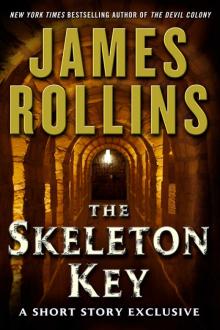 The Skeleton Key
The Skeleton Key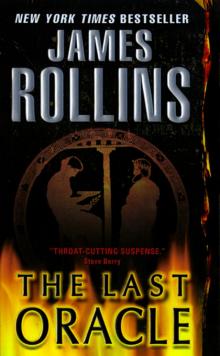 The Last Oracle
The Last Oracle The Judas Strain
The Judas Strain Black Order
Black Order Sandstorm
Sandstorm Ghost Ship
Ghost Ship The Devil Colony
The Devil Colony Subterranean
Subterranean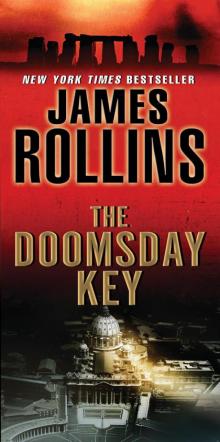 The Doomsday Key
The Doomsday Key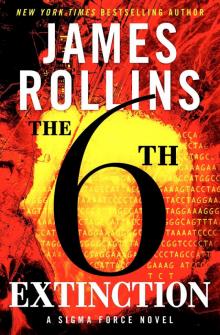 The 6th Extinction
The 6th Extinction Bloodline
Bloodline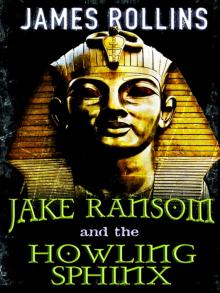 Jake Ransom and the Howling Sphinx
Jake Ransom and the Howling Sphinx The Midnight Watch
The Midnight Watch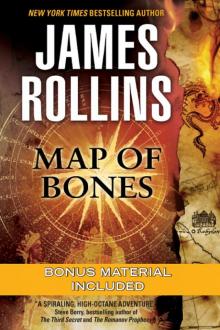 Map of Bones
Map of Bones The Demon Crown
The Demon Crown Deep Fathom
Deep Fathom Sigma Guide
Sigma Guide Kowalski's in Love
Kowalski's in Love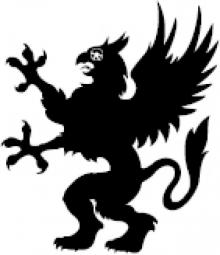 Jake Ransom and the Skull King's Shadow
Jake Ransom and the Skull King's Shadow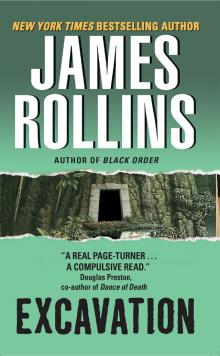 Excavation
Excavation The Seventh Plague
The Seventh Plague Altar of Eden
Altar of Eden Unrestricted Access: New and Classic Short Fiction
Unrestricted Access: New and Classic Short Fiction Indiana Jones and the Kingdom of the Crystal Skull
Indiana Jones and the Kingdom of the Crystal Skull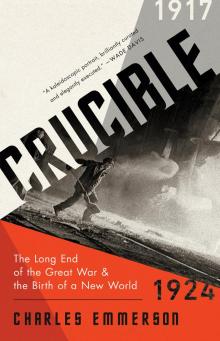 Crucible
Crucible The Eye of God
The Eye of God The Bone Labyrinth
The Bone Labyrinth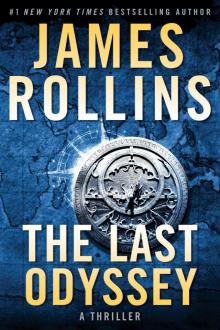 The Last Odyssey: A Thriller
The Last Odyssey: A Thriller Unrestricted Access
Unrestricted Access Amazonia
Amazonia Blood Brothers: A Short Story Exclusive
Blood Brothers: A Short Story Exclusive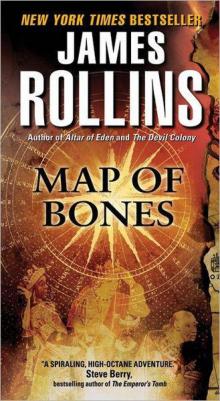 Map of Bones: A Sigma Force Novel
Map of Bones: A Sigma Force Novel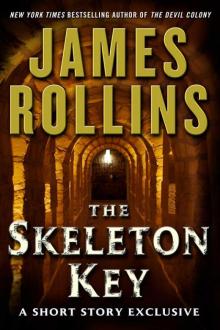 The Skeleton Key (sigma force)
The Skeleton Key (sigma force)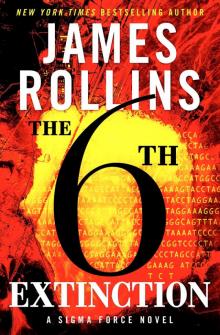 Sigma Force 10 - The Sixth Extinction
Sigma Force 10 - The Sixth Extinction Innocent Blood
Innocent Blood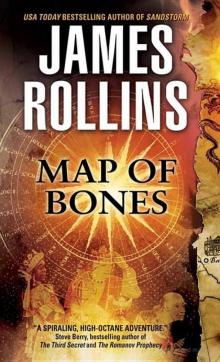 Map of Bones sf-2
Map of Bones sf-2 The Eye of God: A Sigma Force Novel
The Eye of God: A Sigma Force Novel The Eye of God: A Sigma Force Novel sf-9
The Eye of God: A Sigma Force Novel sf-9 The Pit
The Pit Indiana Jones and the The Kingdom Of The Crystal Skull
Indiana Jones and the The Kingdom Of The Crystal Skull The Last Oracle (2008) sf-5
The Last Oracle (2008) sf-5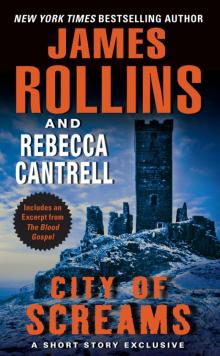 City of Screams
City of Screams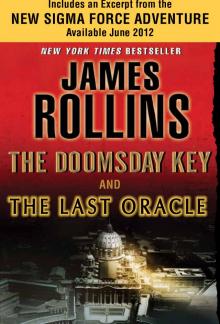 The Doomsday Key and The Last Oracle with Bonus Excerpts
The Doomsday Key and The Last Oracle with Bonus Excerpts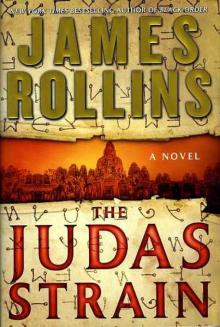 The Judas Strain sf-4
The Judas Strain sf-4 Blood Infernal
Blood Infernal The Demon Crown: A Sigma Force Novel
The Demon Crown: A Sigma Force Novel War Hawk: A Tucker Wayne Novel
War Hawk: A Tucker Wayne Novel SANDSTORM sf-1
SANDSTORM sf-1 Bloodline: A Sigma Force Novel
Bloodline: A Sigma Force Novel Amazonia: a novel
Amazonia: a novel The Last Oracle: A Sigma Force Novel
The Last Oracle: A Sigma Force Novel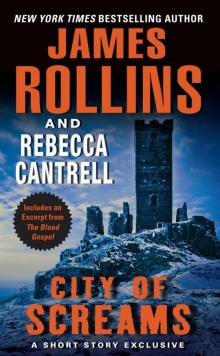 City of Screams (the order of the sanguines)
City of Screams (the order of the sanguines) Ghost Ship: A Sigma Force Short Story
Ghost Ship: A Sigma Force Short Story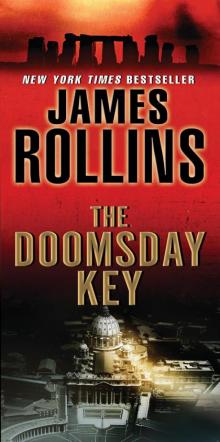 The Doomsday Key: A Sigma Force Novel
The Doomsday Key: A Sigma Force Novel